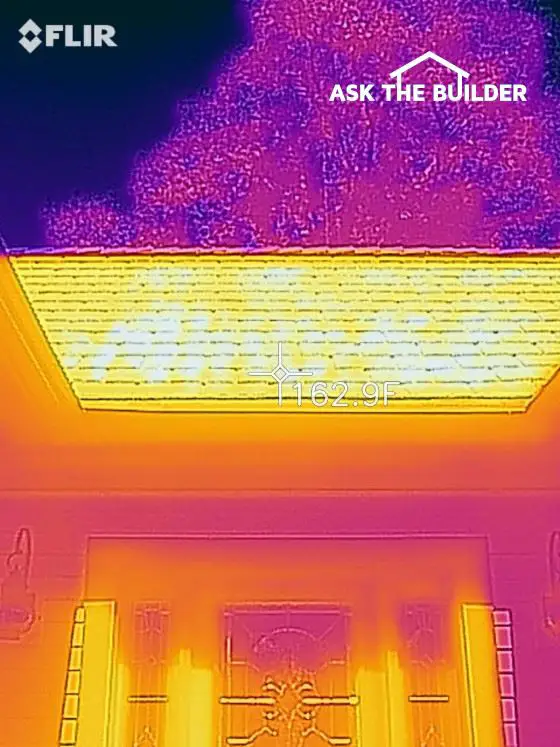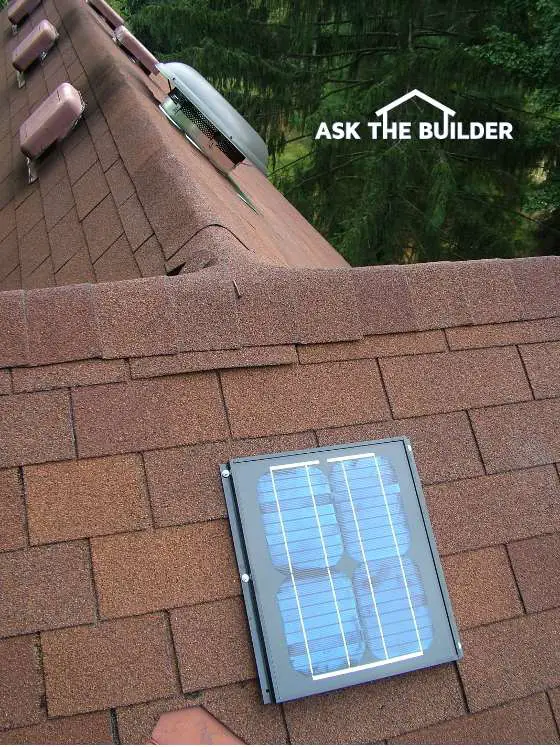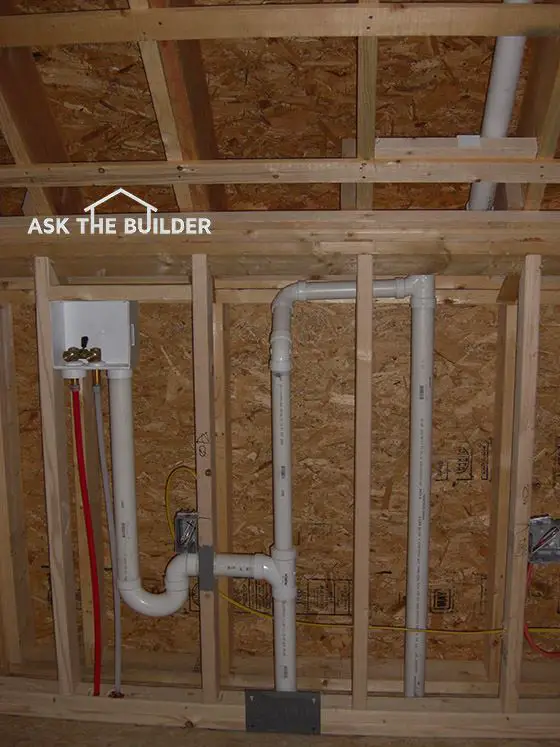Solar Attic Fan Tough Love and Plumbing Vent Pipes
Solar Attic Fan Tough Love

This is my own roof on an August day at noon. 162.9F !!!!! No wonder your attic space is 150F or more! Copyright 2018 Tim Carter
Question #1: Tim, can you cut through the fog of confusion about solar attic fans? I just want the tough-love truth. Do they really work or are they mostly hype? What does it take to really cool an attic space? My husband really thinks it’s a great idea to buy a solar attic fan, but I don’t want to waste the money if it does little or nothing. Bridgett W., Tampa, FL
You may have the same problem as Bridgett. There are talented and clever salespeople and marketing managers that can cast a spell upon you about new or newer products. Any product that has to do with solar or is touted as environmentally friendly breaks down the purchase barrier with little effort. After all, who doesn’t want free energy or who wants to be an environment hater?
I remember when the solar attic fan craze was hotter than the surface of my roof at noon on a summer’s day. Fan manufacturers sent me ones to test and test I did! The results were just as I expected. The solar attic fans all moved less than 1,000 cubic feet of air per minute (CFM) and they did nothing to lower the temperature inside my own attic.

This is a solar panel supplying free electricity to the attic fan under the silver dome on the rear roof. The fan blades spin, but they don't lower the attic temperature at all. Copyright 2018 Tim Carter
The infrared rays from the sun are powerful. They can elevate your roof temperature above 160 F. I’m quite sure in certain situations I could get a reading higher than 180 F using my thermal imaging camera.
This heat is transferred to the roof sheathing and then to the roof framing members. In essence, your entire roof structure starts emitting low-level infrared heat just like the embers in a campfire.
For the attic fans to work at peak efficiency, they need to be on a south-facing roof slope if you live in the Northern Hemisphere. If a cloud blocks the sunlight, the fans slow or stop. As the sun gets lower in the sky when attic temperatures are at their greatest, the fans slow down. You need the fans to be operating at full speed late in the day and into the evening to bring air into the attic to cool all the lumber as rapidly as possible.
I tested a solar attic fan that moved 800 CFM of air. I took temperature readings in my attic as the fan operated on a cloudless day and the readings never dropped even though the fan was moving at top speed.
If you want to lower the temperature in your attic a considerable amount, you need to do what chicken farmers do. They move tens of thousands of CFM through the barns where the chickens are living. Some of the high-speed fans have blades larger than 4-feet in diameter!
This topic was first mentioned way back in my July 20, 2009 AsktheBuilder Newsletter.
I’ve got lots of extra solar attic fan data and videos on my website waiting for you. Just go to: Solar Powered Attic Fan
Plumbing Vent Pipes

Most of the pipes you see in this photo are plumbing vent pipes believe it or not! (C) Copyright 2018 Tim Carter
Question #2: My new home is under construction and I stopped by to check on the progress. The plumber had just finished putting in all the drain pipes. I was surprised to see lots of pipe rising up through the walls and up in the attic. I was upset thinking that my money was being wasted but the builder said the pipes are vent pipes. I had no idea so much piping is behind the plaster in my current home and up in my attic. Are the vent pipes necessary? What do they do? Ted B., Tewksbury, MA
I’ve been a master plumber since age 29 and I can remember seeing the maze of vent pipes in a home for the first time. I had never bothered to think about what that stubby little pipe was connected to that stuck up through the roof of my parents’ home.
Vent pipes supply air into your plumbing system. Each time water drains through the pipes on its way to the sewer or septic tank it pushes air out of the way in the drain pipes. This air needs to be replaced and the best way is to grab it from the atmosphere above your home.
If you didn’t have vent pipes in your home, the water would drain sluggishly and air would get sucked into the system through other fixtures in your home. The water movement from a flushed toilet creates a significant short-lived vacuum in the system that can slurp the water from a vanity or tub trap with no effort. You may have heard this sucking noise in the past and not realized what was happening.
If a trap gets sucked dry, then sewer gas and vermin can enter your home. This is why plumbing vent pipes are so very important.
The plumbing codes in certain places allow mechanical vents at or under certain fixtures so plumbers don’t have to install all the vent pipes. I’m not a fan of these shortcut devices because they have moving parts. Anything with a moving part fails at some point. I routinely get email from people with sewer gas odor in their homes from failed mechanical vents.
There’s no substitute for a traditional vent-pipe system that has at least one full-sized vent pipe. There are no moving parts. I’m just a few months away from installing this old-fashioned time-tested system in my daughter’s new home.
I’ve got great detailed tips and remarkable vent-pipe video I shot showing you all the vent pipes in a new home. Go to: Plumbing Vent Piping Tips
Column 1261